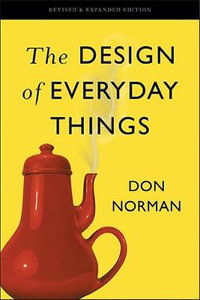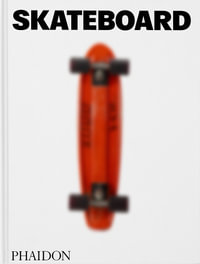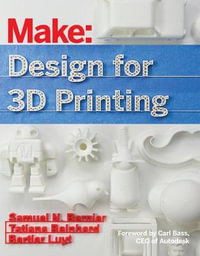| Acknowledgments | p. ix |
| Introduction | p. xi |
| About the Author | p. xxiii |
| Proposal/Contract | p. 1 |
| Strategic Planning | p. 1 |
| Proposal Support | p. 2 |
| Identifying Customer Requirements | p. 2 |
| Determining Product Concept | p. 16 |
| Determining Commonality | p. 16 |
| Requests for Deviation from Customer Requirements | p. 17 |
| Program Risk: Analysis and Mitigation | p. 18 |
| Developing Design-to-Cost Goals | p. 19 |
| Master Schedule | p. 21 |
| Determining Production Philosophy and Location | p. 22 |
| Simulation Analysis for Producibility | p. 23 |
| Simulation Analysis for Factory and Space Planning | p. 23 |
| Assembly Tooling, Fixture, and Equipment Forecasts | p. 24 |
| New or Modified Production Equipment | p. 25 |
| System Design | p. 27 |
| Conduct Preliminary Design-to-Cost (DTC) Analysis | p. 27 |
| Assembly Process Methodology | p. 28 |
| Develop Tooling Concepts | p. 28 |
| Develop Preliminary Manufacturing Plan or Flow | p. 28 |
| Identify New Manufacturing Technologies | p. 31 |
| Determine Product-Packaging Requirements | p. 33 |
| Develop Prototype Assembly Tooling | p. 33 |
| Conduct Facilities Analysis | p. 34 |
| Determine Logistical Support Requirements | p. 34 |
| Determine Capital Equipment Requirements | p. 35 |
| Determine Test Philosophy | p. 35 |
| Determine Quality Assurance Requirements | p. 35 |
| Identify Human Resource Requirements | p. 38 |
| Meetings | p. 39 |
| Detailed Design | p. 41 |
| Design Considerations | p. 41 |
| Conceptual Design | p. 43 |
| Analysis and Refinement | p. 44 |
| Design for Manufacture | p. 44 |
| Drafting and Documentation | p. 45 |
| Toolpath Creation and Machining | p. 46 |
| New Production Process Development | p. 48 |
| Assembly/Process Methodology | p. 48 |
| Design to Cost | p. 48 |
| Conduct Parts Obsolescence Study | p. 49 |
| Design for Production | p. 50 |
| Design for Manufacturing and Assembly (DFMA) | p. 51 |
| Conduct Formal Cross-Functional Design Reviews | p. 53 |
| Bill of Material (BOM) | p. 54 |
| Assembly Simulation | p. 54 |
| Selecting Subcontractors and Vendors | p. 56 |
| Determine Exit Criteria for Design Output to Manufacturing | p. 57 |
| Create Detailed Manufacturing Plan/Flow | p. 58 |
| Create Lean Factory Design/Balanced Flow | p. 58 |
| The 5S Visual Controls | p. 59 |
| When to Use | p. 60 |
| How-to Steps | p. 60 |
| Why Have Visual Controls? | p. 61 |
| What a Visual Workplace Looks Like | p. 61 |
| The Five Whys | p. 61 |
| When to Use | p. 61 |
| Develop Configuration Management Plan | p. 62 |
| Documentation Media Method | p. 63 |
| Conduct Product Design Documentation Release | p. 64 |
| Prepare Test Integration Plan | p. 64 |
| Create Test Hardware and Software | p. 65 |
| Printed Wire Board Design to Release: An Example | p. 66 |
| Producibility Engineers | p. 66 |
| Technology Roadmap | p. 68 |
| Metrics | p. 68 |
| Circuit Card Assembly (COE): Role and Responsibility | p. 68 |
| Circuit Card Assembly: Proof-of-Design Process | p. 69 |
| Task Description | p. 69 |
| Manufacturing Planning and Process/Prototype/Test Development | p. 81 |
| Transition to New Production Processes | p. 89 |
| Determine Facility Requirements | p. 90 |
| Finalize Assembly Methodology | p. 90 |
| Determine Tool Design and Fabrication Requirements | p. 90 |
| Implement Ergonomics | p. 91 |
| Transition to a Contract Manufacturing Facility | p. 91 |
| Implement Vendor Monitoring | p. 94 |
| Write Software Programs for Manufacturing Equipment | p. 95 |
| Implement Assembly Tooling | p. 95 |
| Finalize New Production Processes | p. 96 |
| Conduct Line Balancing Analysis | p. 96 |
| Establish Metrics | p. 96 |
| Determine Inventory System Based on Contractual Type | p. 97 |
| Create Staffing Plan | p. 98 |
| Control Tools | p. 98 |
| Finalizing Manufacturing Plan/Flow | p. 98 |
| Conduct Prototype Documentation Planning | p. 98 |
| Determine Capital Requirements | p. 99 |
| Create Inventory System | p. 99 |
| Finalizing Production Plan | p. 99 |
| Conduct a Production Readiness Review | p. 99 |
| Test Integration | p. 100 |
| Manufacturing Plan | p. 102 |
| Production Readiness | p. 105 |
| Production Readiness Is a Complex Step | p. 105 |
| Implement Line Stock | p. 108 |
| Implement Configuration Management | p. 109 |
| Create Change Control Board | p. 109 |
| Verify Tooling | p. 109 |
| Support Transition-to-Production Processes | p. 110 |
| Create Prototype Routing and Planning | p. 110 |
| Develop Change Control Board Protocol | p. 111 |
| Conduct Prototype Kitting | p. 111 |
| Coordinate Configuration Management with Vendors | p. 111 |
| Develop Quality Assurance Requirements/Buy-Off | p. 112 |
| Train Production Staff | p. 112 |
| Build Prototype Units | p. 113 |
| Low-Rate Initial Production | p. 115 |
| Introduction | p. 115 |
| Implement Production Tooling | p. 118 |
| Update Tooling Documentation | p. 118 |
| Verify Calibration and Maintenance Schedules | p. 119 |
| Update Drawing Documentation | p. 119 |
| Update Planning Documentation | p. 119 |
| Implement Kitting Plans | p. 119 |
| Update Test Fixtures and Software for Production Hardware | p. 119 |
| Finalize Staffing Plan | p. 120 |
| Build First Article | p. 120 |
| Create a Master Schedule | p. 120 |
| Update Documentation Changes | p. 121 |
| Conduct First-Article Buy-Off Procedures | p. 121 |
| Begin Low-Rate Initial Production (LRIP) | p. 121 |
| Determine Production Ramp-Up | p. 122 |
| Production | p. 123 |
| Build Production Units: Ramp up to Full Production | p. 123 |
| Other Areas for Concern | p. 127 |
| Data Loss | p. 127 |
| Production Breaks: Bathtub Issues | p. 128 |
| Defect Control | p. 129 |
| The Hidden Factory | p. 130 |
| The Experience Level of Manufacturing and Producibility Engineering Personnel | p. 130 |
| References | p. 133 |
| Quality Function Deployment (QFD) | p. 135 |
| Six Sigma and Design-to-Production Transition | p. 139 |
| Design for Manufacturing | p. 163 |
| Effective Transition from Design to Production Vendor Survey Tools | p. 173 |
| Effective Transition from Design to Production | p. 191 |
| Design for the Environment (DfE) | p. 229 |
| Index | p. 241 |
| Table of Contents provided by Ingram. All Rights Reserved. |
























